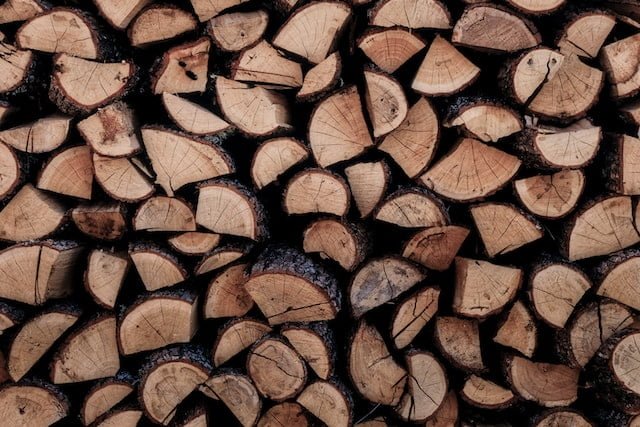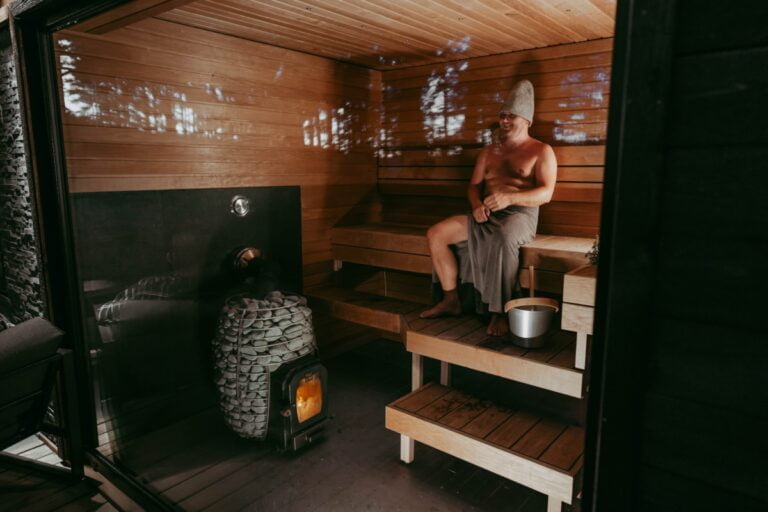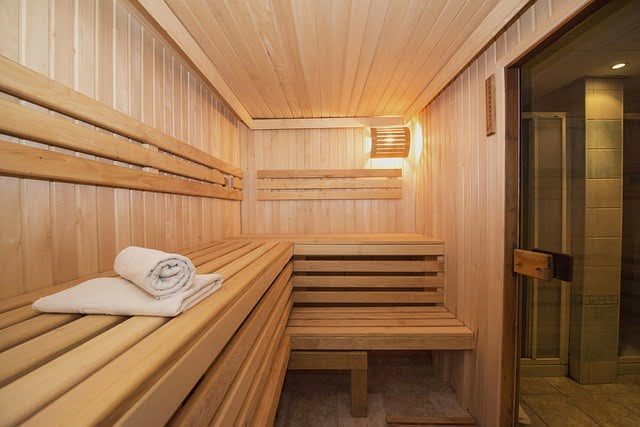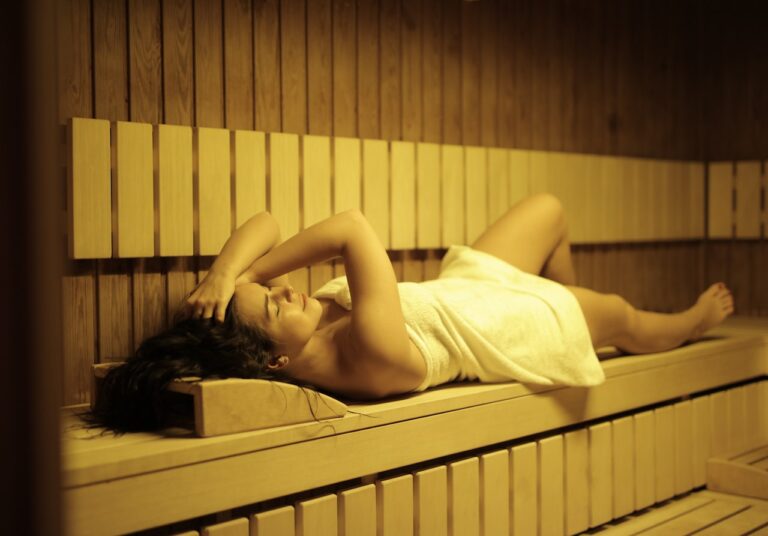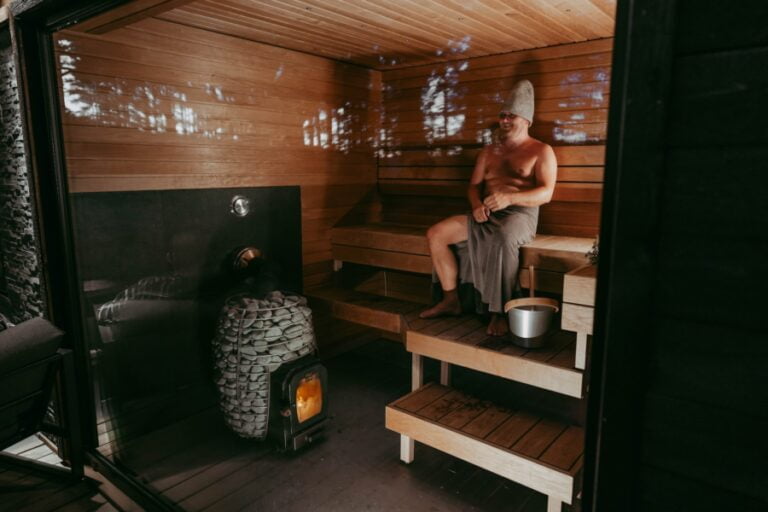Best Types of Wood for Sauna Design
When choosing the best wood for saunas, you want to choose a wood that looks great, insulates your sauna, and dries quickly to prevent mold or mildew. The right type of sauna wood will help your sauna heat up faster, retain heat, and give it the classic look sauna lovers enjoy.
If you are building an infrared sauna, you can focus less on wood that prevents mildew and mold than if you are building a traditional sauna. Traditional saunas create a lot more steam than infrared saunas, so deciding a dry wood is important. Infrared saunas tend to get less hot than traditional saunas, so your main focus should be selecting a wood that insulates the sauna much heat as possible.
Most Popular Wood for Sauna
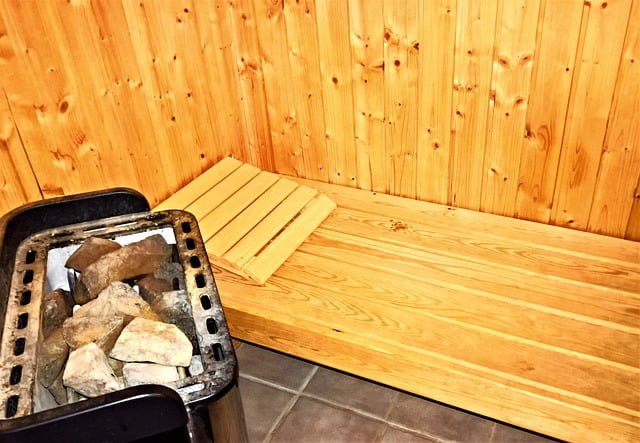
When putting together this list of popular sauna wood, I looked for wood with the following characteristics: mold resistance, density to not retain water, ability to reflect heat, and durability. The list below covers the most popular choices.
Western Red Cedar
Western red cedar is one of the most popular options of wood for sauna because it is softwood and doesn’t crack or expand when heated. Cedar’s varied natural colors can be a nice touch for your sauna’s design. Because of its insulating properties, cedar allows the sauna’s heat to spread uniformly while keeping the wood’s surface comfortably cool to the touch.
Cedar, most importantly, resists decay and fungi and has a long lifespan.
Pine
The cheapest wood for sauna is pine. Pine trees typically produce a darker wood than spruce trees, though the two species are otherwise indistinguishable besides the presence of more knots.
In infrared saunas, these knots may dry and fall out. That’s why they aren’t recommended for use in infrared saunas. When constructing a sauna, pine should be reserved for the walls and ceiling.
Pine, on the other hand, can be transformed into a superior, more stable wood through thermal treatment. Make sure the pinewood you use in your sauna has been kiln-dried or thermally treated.
Nordic Spruce
There are several names for the Nordic spruce tree. It inhabits the northern and eastern parts of Europe, as well as the central regions. Because of its density and deep roots, it is often used in saunas.
In Finland, saunas are typically constructed from Nordic spruce. It is a pale wood that retains its coloration over time. In addition to having natural insect repellent properties, it also gives off a subtle aroma.
There is some sap in Nordic spruce, and the amount varies from plank to plank. Thus, it is imperative that you conduct an inspection on the wood.
Common Aspen
Another unique wood that is frequently used for sauna construction is aspen. It has a vibrant hue and can be spotted in the northern parts of Europe, Asia, and Russia where it is at home in the cooler climates.
Aspen is the best wood for saunas because it is naturally toxic-free, allergen-free, resin-free, and moisture-resistant. Aspen is a good option for construction because it is resistant to decay and bacteria.
The distinctive light tone and patterns of common aspen can give your sauna a high-end appearance.
Redwood
With a few exceptions, redwood and western red cedar are very similar wood for saunas. It’s a softwood that holds up well in hot environments. It adds a splash of color and a unique style to your sauna with its stunning red hue. To add to its durability, redwood is impervious to rot, mildew, and fungi.
There are, however, a few drawbacks to redwood that should be mentioned as well. To begin with, redwood loses its initial hue over time. The red tones fade and turn gray after a few months of use. Redwood saunas, especially new ones, can stain your body red from the red dye they secrete.
Western Hemlock
Although it lacks the versatility of western red cedar, western hemlock makes a fine sauna wood due to its durability and distinctive grain pattern. Combine it with other woods for a full sauna experience.
Western red cedar can be used for the walls and ceiling of your sauna, while western hemlock can be used for the benches and doors.
Western hemlock, while not as susceptible to decay as some other options, does expand slightly over time.
Douglas Fir
Even though it looks like a fir, the Douglas fir is actually a conifer. A member of the pine family. The Douglas Fir is the most productive tree in Western North America, and great wood for sauna.
Because of its pleasing aesthetic, Douglas fir is often chosen to serve as a Christmas tree. Its strength, resilience, and aesthetic appeal all contribute to its high market value. Using Douglas fir for your sauna will give it a lovely, uniform appearance. It is odorless and resistant to decay and fungal growth.
Alaskan Yellow Cedar
Hot tubs, saunas, and pools made of Alaskan yellow cedar are highly regarded. Alaskan yellow cedar can handle the heat and humidity of saunas because it thrives in similar conditions. It’s lightweight, but it’s also dense enough to support complex architecture.
It resists mold and mildew well and is sought after for the distinctive yellowish hue that lends opulence to the sauna’s aesthetic. The aroma of Alaskan yellow cedar in a sauna can be relaxing and therapeutic.
Basswood
Basswood, which is naturally hypoallergenic, is the best option for people with hypersensitive skin. It has natural antifungal properties and is a light brown color. Because it is a softwood, it can withstand high temperatures and maintain its structural integrity for a long time.
Basswood is odorless and non-toxic, and it has very few knots. It’s not going to crack or expand too much, and it feels nice to the touch. Basswood is the best wood for infrared saunas because it is inexpensive and widely available.
Eucalyptus
To put it simply, eucalyptus is a fragrant softwood. Given its rapid growth rate, this tree species is an environmentally responsible wood for sauna usage. It has a stunning visual appeal that can help your sauna stand out from the crowd.
Since it is so uncommon, eucalyptus is priced higher than the other options available. Because of this, it is rarely used in sauna construction.
Except for cedar, no other wood has inherent protection against insects and decay. The color of eucalyptus changes as it ages and can be found in a wide variety of grain sizes.
Why Does the Type of Wood Used in a Sauna Matter?

Wood for sauna matters because it will help protect your sauna from mold, retain heat, and provide you with a traditional sauna feel. As you can tell from this article, there are many options, but the most common choices are cedar and pine.

